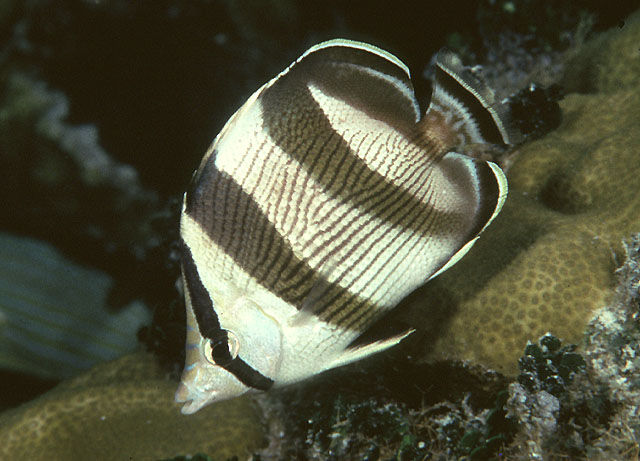| Chaetodontidae (Butterflyfishes) |
| 16 cm TL (male/unsexed) |
|
reef-associated; marine; depth range 3 - 70 m |
| Western Atlantic: Massachusetts, USA to Santa Catarina, Brazil (Ref. 57756), including the Gulf of Mexico and Caribbean Sea. Eastern Central Atlantic: St. Paul's Rocks (Ref. 13121). |
|
Dorsal spines (total): 12-12; Dorsal soft rays (total): 19-21; Anal spines: 3-3; Anal soft rays: 16-17. With two broad black bars on side of body and a third bar basally in soft portion of dorsal fin which extends onto caudal peduncle; broad black submarginal bands in the median fins; pelvic fins black except for the spine (Ref. 13442). |
| Maximum depth from Ref. 126840. Inhabit coral reefs. Occur singly or in pairs. Feed on polychaete worms, coral polyps, crustaceans and mollusk eggs. Oviparous (Ref. 205), monogamous (Ref. 52884). Form pairs during breeding (Ref. 205). Adults may form plankton-feeding aggregations of up to 20 individuals, and occasionally clean other reef fishes which join the group, such as grunts, parrotfishes and surgeon fishes. (Ref: 40093). Generally common (Ref. 9710). |
|
Least Concern (LC); Date assessed: 07 October 2009 Ref. (130435)
|
| harmless |
|
Outside distributional range. Reported from Tubbataha Reefs (Ref. 53416, 57038). Also in Ref. 121724. |
Source and more info: www.fishbase.org. For personal, classroom, and other internal use only. Not for publication.

